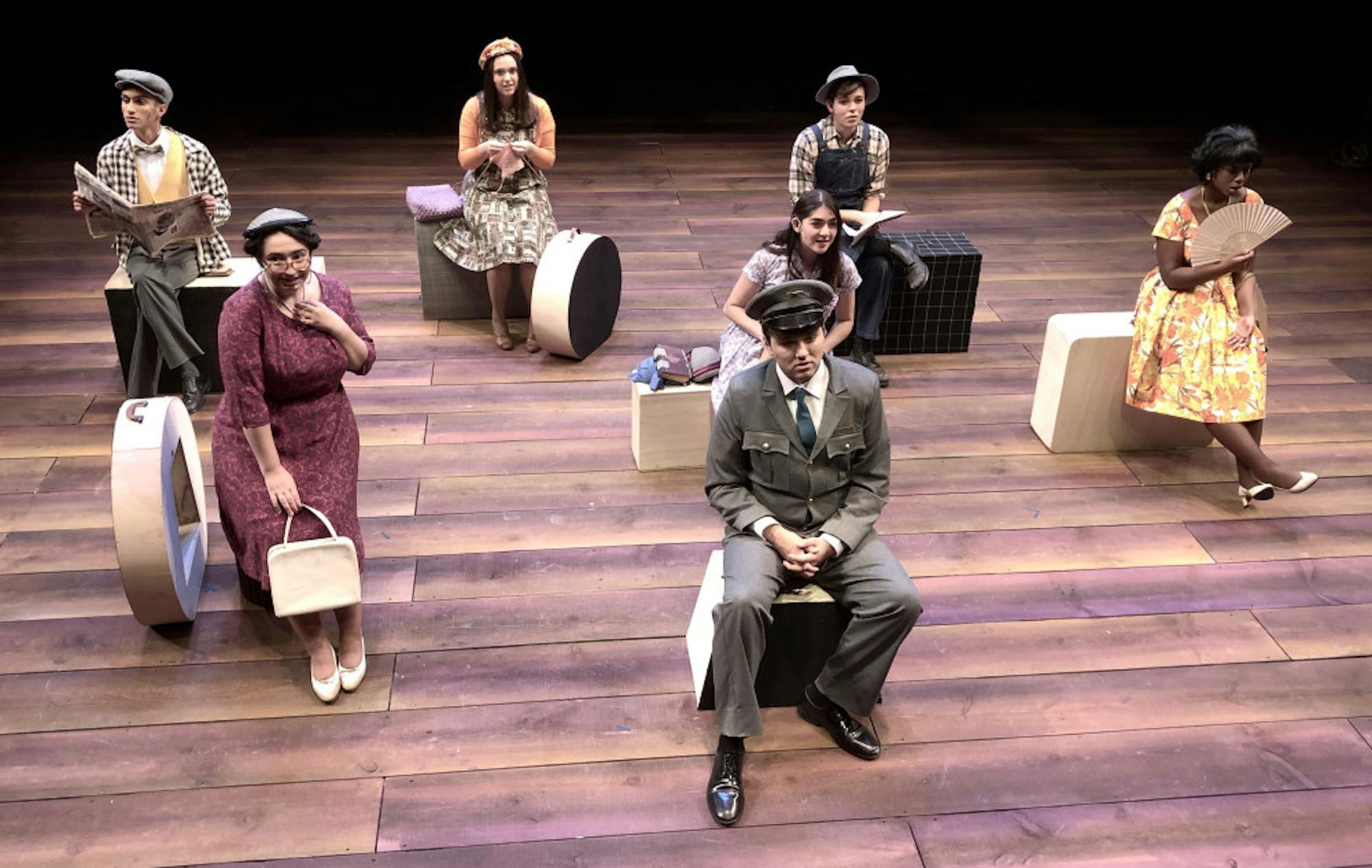Adapted from the short story “The Ugliest Pilgrim” by Doris Betts, the musical is composed by Jeanine Tesori with libretto from Brian Crawley. “Violet” premiered off-Broadway in 1997 and debuted on Broadway in 2014 with revisions. The musical tells the bus journey of its eponymous female protagonist to an evangelist preacher, whom she believes can heal the facial scar left by her father in a wood-chopping accident. On the trip, Violet encounters two American soldiers, Monty and Flick. Her respective friendship and romantic relationship with them ultimately become central to defining the symbolism behind her “healing.”The team behind the Tufts production of “Violet” includes director Bridget Kathleen O’Leary, music director Todd C. Gordon, a student and faculty design team and an all-student cast. O’Leary is a Boston-based artist actively involved in numerous theater programs and companies. She is the associate artistic director at New Repertory Theatre, literary chair of the executive committee for the National New Play Networks, and the co-founder of Phoenix Theatre DC. She also has worked as a freelance director for Speakeasy Stage Company, Actors Shakespeare Project, Gloucester Stage Company and the Nora Theatre Company. As a second-year visiting artist in directing in the Tufts Department of Theatre, Dance, and Performance Studies, O’Leary directed the department’s “Fires in the Mirror” last spring. To find out more about the upcoming production, the Daily sat down with O’Leary for an interview. The Tufts Daily (TD): What is “Violet” about?
Bridget Kathleen O’Leary (BKO): [The play] is set in 1964, right after the Civil Rights [Act of 1964] has passed ... It’s kind of looking at the external scar that [Violet] carries and what it is for [Flick] to travel through the world as a black man in the '60s ... It is of great cost to him to be a black man out in the world, and she is struggling to be a woman that does not believe she has external beauty. There is this really beautiful refrain in a couple of the songs that they both sing, where they say, "Look at me." "Really look at me" is what they ask of each other. It’s this idea of "can you see beyond the exterior to get to the heart of who I am."
TD: What kind of role does race play in the musical?
BKO: [Reference to race] is only clear in that [Flick] is able to talk to [Violet] about things that are not attainable for him because of the color of his skin. [Race] exists in this really honest and tangible way … [and] we have a mixed-race cast ... So is race explicitly discussed? No, but it’s explicitly explored.
TD: The production’s casting process was not color-conscious. What does that mean?
BKO: [Color-conscious casting means] we are consciously saying that we are going to cast people of all races in these roles. And that is not what [“Violet”] is. The people that are not white in this play have to acknowledge that as part of their existence in this world and what that means in 1964, especially as you are going through the Bible Belt … The races of the people in the show matter … because of the setting of [the musical]. I cannot cast a person of color in the show without acknowledging what their experience is going to be on this bus in every city it stops in.
TD: You said that “Violet” was chosen by you and a selection committee within the department. What made you choose the musical?
BKO: I am very interested in telling stories that empower female protagonists. And I think that Violet is a very strong, beautiful and human character. And it’s painful to watch all of that strength ... possibly undermined by her belief that this scar in some way diminishes her value in the world. The journey she takes throughout the play is very complex. But I find it very gratifying to be able to watch her overcome all these things, to figure out who she is. [Initially,] there is something about Violet not seeing herself as a romantic interest in either of [Flick and Monty]. So she can be very unassuming, upfront and real with them. And because of that, Monty feels drawn to her, because she is the only person that probably hasn’t treated him as an object, and he treats everyone as an object.
TD: Can you also speak to Christian presence in the musical?
BKO: The religious aspects of [the play] are less important than faith or having faith in something. Having faith in something greater than yourself, but also acknowledging that the ability to have faith in something greater than yourself gives you the permission to have faith in yourself.TD: You mentioned that the musical deals with self-image. Can you elaborate on that? BKO: The metaphor of the play for me is that whenever we take a journey, our baggage goes with us -- who we are goes with us, our past goes with us. So the design concept … is that the entire world of the play is going to be made up of suitcases of different sizes. They will create tables and beds and bus seats. Every character in the play has baggage that they bring on and off stage.TD: How are you recognizing the gap between theatrical aesthetics and real-life austerity in the production? BKO: Our job is to create a tension between the beauty of the music and the grit of the lyrics. The music is absolutely beautiful, but the words that they are singing and where people are emotionally when they are singing it aren’t necessarily coming from a beautiful place. The world of the play is striving for something more beautiful than what is there in front of us … [Yet] most of things that are tragic are beautiful because they are human.TD: What kind of role do you think theater plays at large in the contemporary society? What kind of reaction do you hope to draw from your audience? BKO: Theater is an opportunity for there to be a conversation between the play and the audience. And when theater is at its most dynamic, the play’s job is to provoke the audience to engage with a part of themselves or the world that they are unaware of. It can be entertaining, but it shouldn’t be easy. Theater should be compelling and able to create conversations around difficult subjects. I want you to leave a show of mine and have a conversation with someone about the way in which it impacted you and what it made you think about; what you’ve either discovered about yourself or discovered about the people in the play or the people around you; how you connected your experience in watching the play with something outside of the physical room that you saw the play in.Tickets to "Violet" can be purchased online through a ticketing link on the Department of Theatre, Dance, and Performance Studies' website. Depending on the date of the performance, ticket prices for Tufts students may range from $1 to $10, and a wine and cheese reception will follow the show on Oct. 26.Editor’s note: This interview has been edited for clarity and length.Correction: A previous version of this article incorrectly stated that the show follows the train journey of its main character. The character travels by bus. The article also incorrectly stated that the production had an all-faculty design team. The article has been updated to reflect these changes. The Daily regrets this error.





